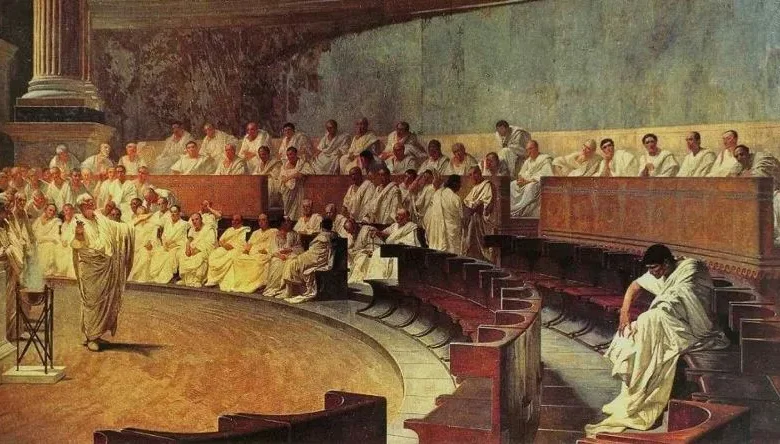
Roman law is one of the foundations of the today’s law structure. At the same time this field and this law system is very important in terms of understanding the evaluation and evolution of today’s political and law structure. Many law, court and constitution traditions of current situation mostly depends on the Roman law, its fundamentals, and its basic assumptions. Apart from that, the Roman law also shaped the many parts of the western side of the world in terms of policy, law and regulations. According to this, study roman law is very important and would be very beneficial to understand the past as well as understand the today.
Roman law is the law of ancient Rome. It was founded in 753 BCE and was used till the 5th century CE which is the century of falling of the Western Empire. After the falling of the empire, Roman law was still used in the Eastern side and Byzantine.
Roman law and its legal structure had a strong impact and domination on the West and also on some parts of the East between the years of 753 B.C. and A.D. 1453. Back in the day, the western Europe legal system mostly based on Roman law which is also called as a civil-law system. However Great Britain system is the exception of this. Lately the Anglo – Saxon system which is called common law would be found in English speaking countries.
Roman law means more than a law today because institutions of Roman law had a strong impact on the other countries, other people, and other law systems. For example, in Germany the Roman law was in charge until the 1990 which was the year of engaging common rules and law for the whole empire. Also, Roman law continue to being in charge with its legacy even after falling of Rome but obviously this was not the fully same law with Roman law, it was just had similar assumptions.
In the first place, Roman Law is the law for principle of personality. That means this is the law of state which is applied by state only to its citizens. In this law, foreigners don’t have any rights but also, they are protected by treaties which signed and agreed with the Rome and their state. Roman law started to modify its legal principles for its citizens and in 450 B.B. the Twelve Tables were put in the Roman Forum. For that tables, citizens could see the laws and could find solutions to their problems. However, like happened in every law, Roman law also couldn’t respond and find a solution to all the society’s problems with just itself and because of this some diversities happened to represent and point to different parts, different communities of society. Basically, in the first-place Roman law is divided into two law system and those are jus civile and jus gentium.
What are the jus civile and jus gentium in Roman law?
First of all, during the years of 753 and 31 BCE the jus civile (civil law) was established and developed. Basically, it applied to just Roman citizens. Jus civile depends on the custom and legislation at the same time.
Secondly, in the third century B.C. jus gentium (international law) was established and developed. This law was used and applied to relations between Romans and foreigners. When the time went on, this is started to be a big compendium of law which was produced by magistrates and governors.
Also, apart from the jus civile and jus gentium division, there was another division in the Roman law. Back in the day, Romans divided the law into jus scriptum which is written law and jus non scriptum which is non written law.
What are jus civile and jus gentium and what is the difference between those?
Jus non scriptum (unwritten law) means the custom and also usage. And written law takes legislations and any other written sources as a source.
Also in Roman law, there several types of jus scriptum. First of which consists of leges or enactments of assemblies of Roman people. In Rome, wealthier and high located class usually dominates the assembly but also plebs and regular citizens had their own council, and those plebs can enact resolutions in there which is called plebiscite. Plebiscite started to bind different classes and parts of the society. Twelve tables is the earliest and most important legislation of the leges. Twelve tables enacted in the years of 451 – 451 BCE. Those years also the years which plebeians have strong problems about social equality.
The other type of jus scriptum of Roman law consists of edicta (edicts) or proclamations of magistrates. The office of praetor was established in 367. Many praetors have worked in the office and each of them had some different perceptions and approaches. Because of this each praetor imposed his/her own type of dealing with issues. Also each one of those praetors was responsible about caring and supervising markets and also foreigners. The perceptions of each praetor have created the edicta.
The third type of jus scriptum is senatus consulta. Those are the suggestions which don’t have any legislative force also they could be forced by edicts of praetors. In the early years of empire, the power of assembly was less, and the power of the emperor is high. In those times, senatus consulta started to be a resolution which endorsed the proposals of emperor.
The fourth type of jus scriptum consists of constitutiones principum. This was the expressions of the legislative power of emperor. In 2nd century CE, the emperor was the only power and only creator of the law and regulations.
The last type of jus scriptum is responsa prudentium. This consists the answers of lawyers to the legal questions. Usually, one of the things that those advisers do was giving an free advice in terms of law. They were not professionals but also they have built an public career themselves with those advices. They advised the praetor on the topic of edict of praetor.



